Abstract
1 This study on 21 neurosurgical patients was set up to investigate the extent to which four chronically administered beta-adrenoceptor blockers, propranolol, oxprenolol, metoprolol and atenolol, cross and blood-brain barrier and enter the cerebrospinal fluid (CSF) and brain tissue. The concentration in the CSF of the three lipophilic beta-adrenoceptor blockers, propranolol, oxprenolol and metoprolol, approximated to the free drug concentration in the plasma, and was a poor predictor of brain concentration. These three lipophilic beta-adrenoceptor blockers appeared in brain tissue at concentrations 10-20 times greater than that of hydrophilic atenolol. The approximate brain/plasma ratio for propranolol was 26, for oxprenolol 50, for metoprolol 12 and for atenolol 0.2. 2 The low concentration of atenolol in brain tissue is possibly responsible for the low incidence of central nervous system-related side effects in patients on this agent compared to lipophilic beta-adrenoceptor blockers.
Full text
PDF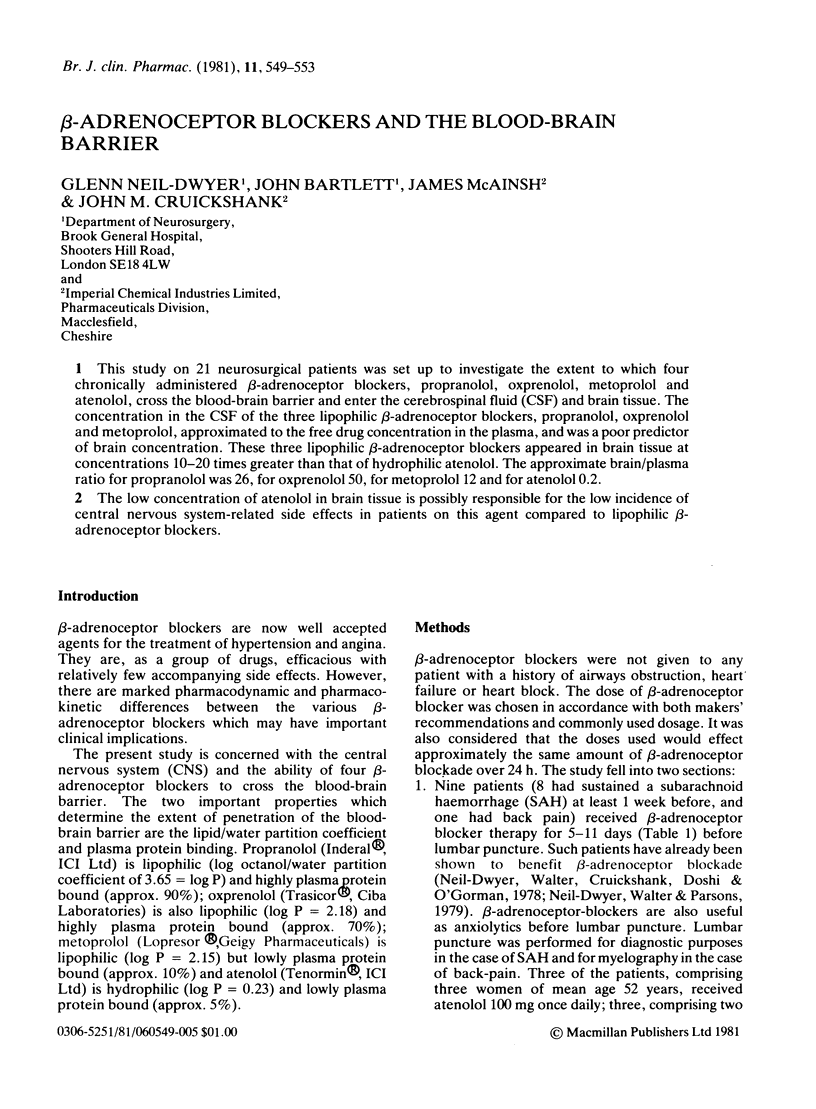
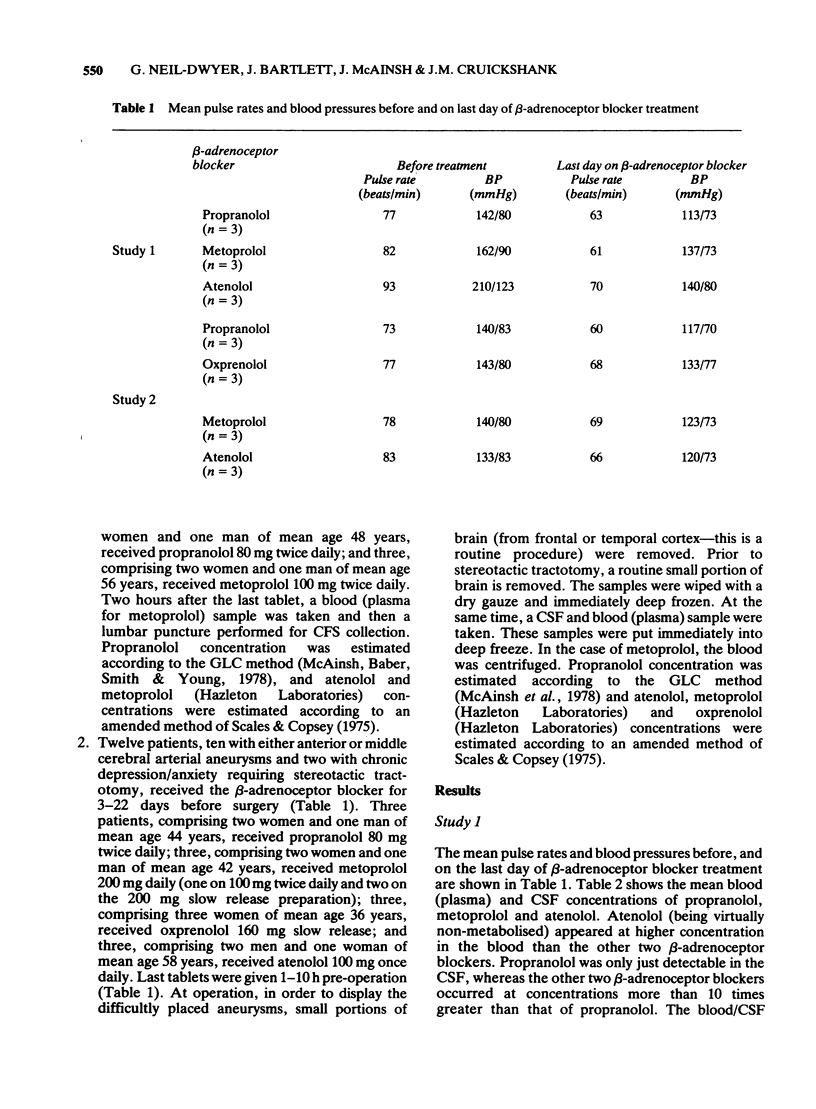
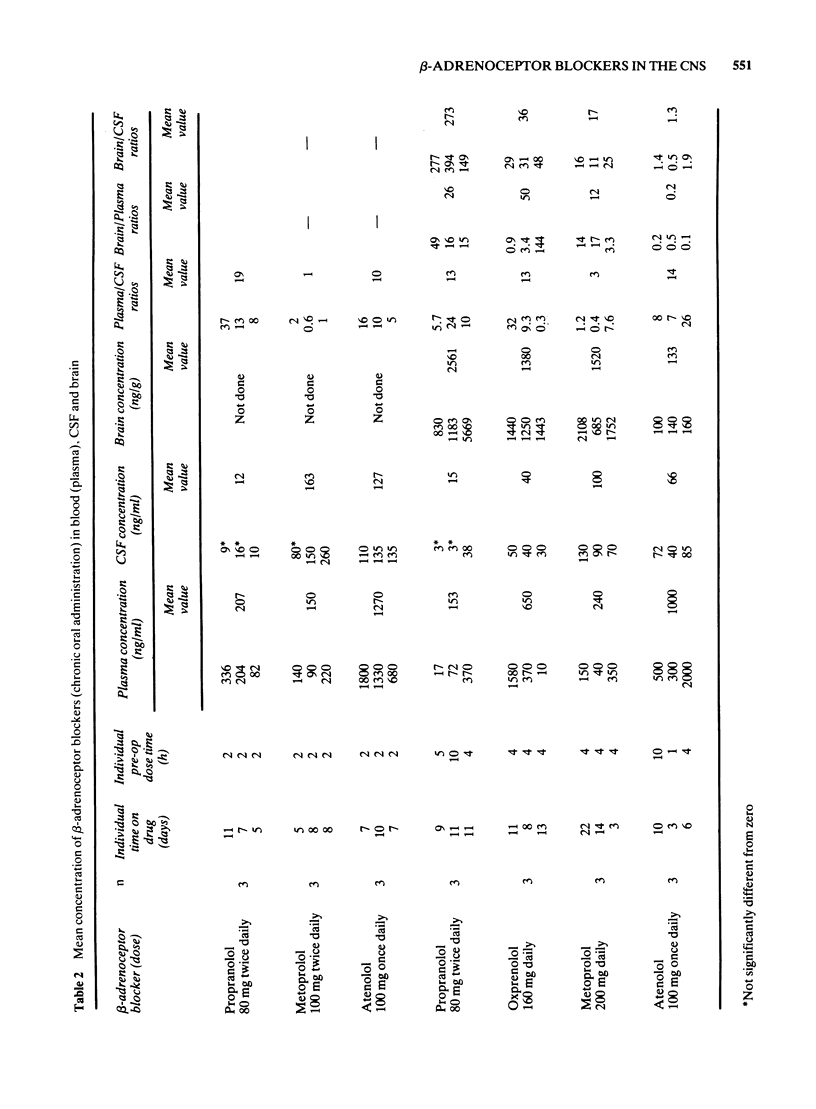
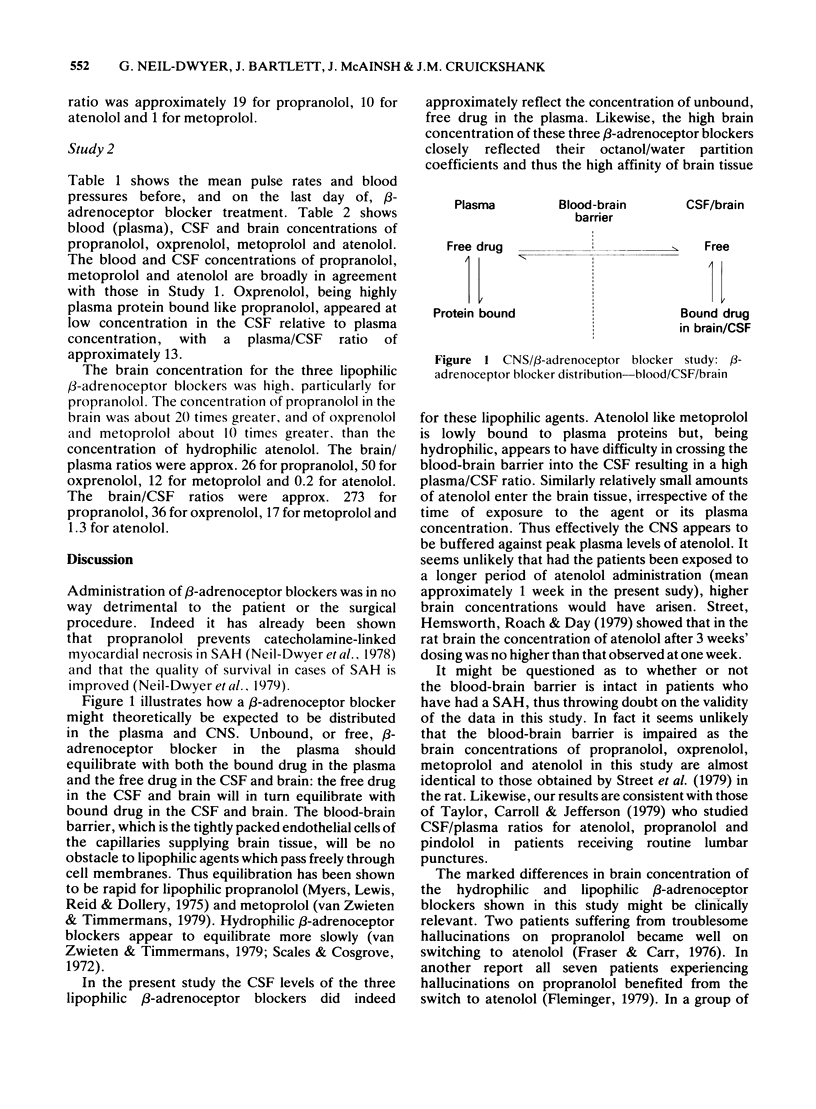
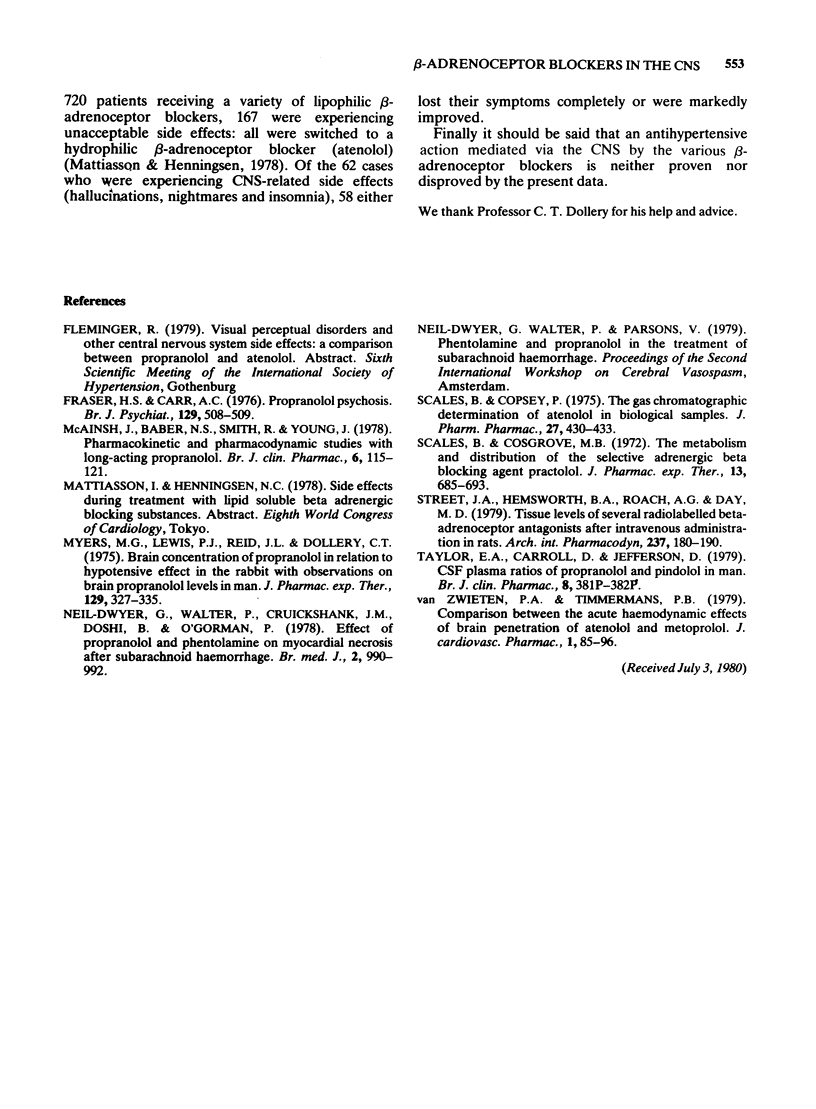
Selected References
These references are in PubMed. This may not be the complete list of references from this article.
- Fraser H. S., Carr A. C. Propranolol psychosis. Br J Psychiatry. 1976 Nov;129:508–509. doi: 10.1192/bjp.129.5.508b. [DOI] [PubMed] [Google Scholar]
- McAinsh J., Baber N. S., Smith R., Young J. Pharmacokinetic and pharmacodynamic studies with long-acting propranolol. Br J Clin Pharmacol. 1978 Aug;6(2):115–121. doi: 10.1111/j.1365-2125.1978.tb00835.x. [DOI] [PMC free article] [PubMed] [Google Scholar]
- Myers M. G., Lewis P. J., Reid J. L., Dollery C. T. Brain concentration of propranolol in relation to hypotensive effect in the rabbit with observations on brain propranolol levels in man. J Pharmacol Exp Ther. 1975 Feb;192(2):327–335. [PubMed] [Google Scholar]
- Neil-Dwyer G., Walter P., Cruickshank J. M., Doshi B., O'Gorman P. Effect of propranolol and phentolamine on myocardial necrosis after subarachnoid haemorrhage. Br Med J. 1978 Oct 7;2(6143):990–992. doi: 10.1136/bmj.2.6143.990. [DOI] [PMC free article] [PubMed] [Google Scholar]
- Scales B., Copsey P. B. The gas chromatographic determination of atenolol in biological samples. J Pharm Pharmacol. 1975 Jun;27(6):430–433. doi: 10.1111/j.2042-7158.1975.tb09473.x. [DOI] [PubMed] [Google Scholar]
- Street J. A., Hemsworth B. A., Roach A. G., Day M. D. Tissue levels of several radiolabelled beta-adrenoceptor antagonists after intravenous administration in rats. Arch Int Pharmacodyn Ther. 1979 Feb;237(2):180–190. [PubMed] [Google Scholar]
- Taylor E. A., Carroll D., Jefferson D. CSF plasma ratios of propranolol and pindolol in man [proceedings]. Br J Clin Pharmacol. 1979 Oct;8(4):381P–382P. doi: 10.1111/j.1365-2125.1979.tb04728.x. [DOI] [PMC free article] [PubMed] [Google Scholar]
- van Zwieten P. A., Timmermans P. B. Comparison between the acute hemodynamic effects and brain penetration of atenolol and metoprolol. J Cardiovasc Pharmacol. 1979 Jan-Feb;1(1):85–96. doi: 10.1097/00005344-197901000-00009. [DOI] [PubMed] [Google Scholar]


